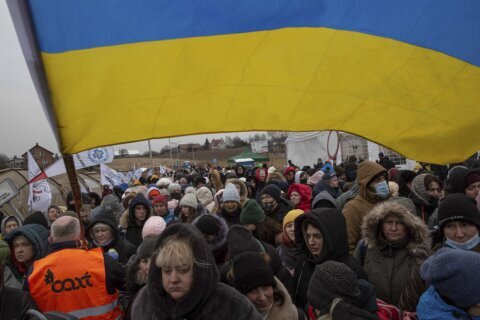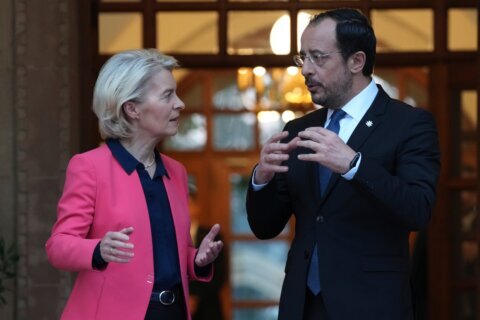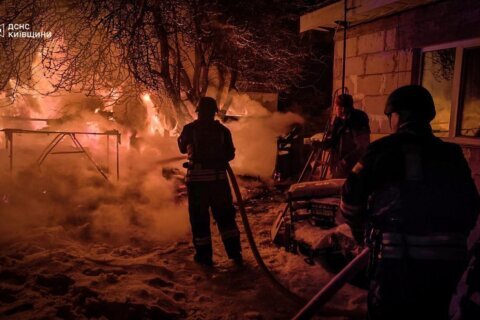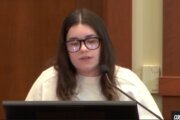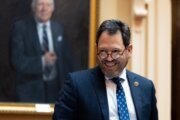The war in Ukraine became real for Col. Robert Swertfager on day one.
A fighter pilot with the California Air National Guard, Swertfager has, by his count, 73 Ukraine entry stamps in his passport over 20 years, the result of a partnership between “The Golden State” and Ukraine that has created relationships both personal and professional.
“We have had official conversations on a regular basis,” Swertfager told CNN, “but daily communications as friends, partners and brothers.”
Swertfager and the other members of the 144th Fighter Wing are close to many pilots in the Ukrainian Air Force, exchanging phone calls, text messages and more every day since Russia invaded Ukraine in late February.
It’s how Swertfager found out so quickly about the death of Col. Oleksandr Oksanchenko on the first day of the war. The two had played a major role in planning the 2011 Safe Skies exercise in Ukraine and had grown close over years of shared training.
“It was no longer just a war that you’re seeing on the television,” Swertfager said, “but it’s hitting home because we just lost a very good friend.”
The relationship between a US state and a foreign nation exists under the National Guard Bureau’s State Partnership Program, where each state will communicate and train with one or more countries as a designated partner.
California began its program with Ukraine in 1993, shortly after the country gained its independence following the dissolution of the Soviet Union. In that time, Ukraine has gone from a fledgling military dependent upon Soviet-era equipment and tactics to a fighting force that has shown itself capable of challenging one of the largest militaries in the world, despite being outmanned and outgunned.
Even though no American troops are on the ground in Ukraine, the strong bonds formed are having a practical impact as Ukraine’s military attempts to resist Russia’s attempts to conquer the country.
Daily contact
Members of the California National Guard have been in daily contact with their Ukrainian counterparts at all different levels, said Maj. Gen. David Baldwin, the commander of the State Military Department, which includes the Army and Air National Guard.
About once a week, Baldwin has a video call with the most senior leaders of the Ukrainian military, he said at a roundtable with reporters about the State Partnership Program which manages relationships between units and foreign nations. But every day he exchanges text messages and has one-on-one phone calls about “the overall situation.”
At the staff level, the Guard’s brigadier generals and colonels work with the Ukrainian defense attache and Ukrainian leaders to refine their requests for weapon systems, Baldwin said. Early in the conflict, these conversations focused on what requests the US was likely to fulfill and what systems may be seen as too offensive in nature. But they have shifted to larger and more powerful systems as the Biden administration has shown its willingness to send in artillery first and now multiple-launch rocket systems.
“The current one that we’re working through is what’s the right fighter aircraft for them,” Baldwin said. California Guard leaders are pushing the Ukrainian Air Force to stick with Soviet-era MiGs for now because of their familiarity with the fighter jets, but Baldwin said Ukraine is looking beyond the immediate timeframe to a year out and beyond.
“What’s in the realm of possibility of systems that will be effective, available and affordable for them?,” Baldwin asked. “The Ukrainians are very quick on the uptake when we train them on Western systems.”
At the tactical level, other Guard members are in touch with their Ukrainian colleagues “on a daily basis” on “tactics, tips, and procedures,” Baldwin said. Ukrainian soldiers will regularly also share anecdotes, photos, videos, maps and more with the California Guard members to whom they’ve grown close, providing an unfiltered look at the minutiae of the ongoing conflict.
Those fragments of potentially valuable information are collected and consolidated in a daily call, Baldwin said, and passed on to the active-duty military. The California National Guard takes part in a daily video call with the Joint Staff at the Pentagon and US European Command.
“Often, the Ukrainians will share information with us that they don’t share through more formal channels because we have these personal relationships,” Baldwin said.
Although California is the state partner of Ukraine, other state National Guard units have gone to Ukraine to train their military as part of the Joint Multinational Training Group-Ukraine (JMTG-U), a mission established following Russia’s invasion and annexation of occupied Crimea in 2014.
Most recently, units from the Florida and Washington National Guard went to train the Ukrainians as part of this mission, building their own relationships.
‘A desperate plea’ from the front line
In one instance, a Washington National Guard member was sitting at home a few weeks ago when his phone rang, Baldwin recounted and a spokeswoman for the Washington Guard confirmed. On the other end was a Ukrainian soldier with a “desperate plea” for help for his friend. The Ukrainian experienced a misfire of his Javelin, an anti-tank missile that has proven devastatingly effective against Russia’s armored vehicles. But this one wasn’t working. The Washington Guardsmen coached the Ukrainian through the misfire procedures, allowing him to fire on the Russian tank.
Without that phone call – and the relationship behind it – the Ukrainian soldier would not have been able to defeat the tank, Baldwin said.
The Florida National Guard was the latest unit to take part in the training group leaving Ukraine about one week before Russia’s invasion began in late-February. They returned to Europe two months later to resume training Ukrainian forces in places like Germany.
“There were some pretty emotional hugs and reunions” when they reunited with their “Ukrainian brethren,” said Maj. Gen. James Eifert, the commander of the Florida National Guard. “They are constantly reminded of the seriousness of their endeavor and the importance of the training that they’re giving.”
The process of learning and improving work both ways. As Ukrainian soldiers and pilots learn tactics and tips from their National Guard counterparts, the Guard members are taking their own notes.
“They are a hybrid of their former (Soviet) doctrine and Western doctrine, which I think is a key contributor to their success right now,” said Swertfager. Members of the California Air National Guard, he says, are in touch with each of the Ukrainian squadrons and all of their different fighter aircraft.
The Ukrainian pilots share their experiences and give the US pilots informal debriefs “on a regular basis,” Swertfager said.
“We’re taking copious notes and learning quite a bit.”
Baldwin, the commander of the California Guard, points to this relationship as perhaps the most important bond between the National Guard and Ukrainian Air Force.
“That relationship of all of them has proven to be about the most effective,” Baldwin said, “because of the tremendous performance of the outnumbered and outgunned Ukrainian Air Force.”
It’s a compliment Swertfager refuses to accept, insisting that no one in California can take credit or wants to take credit for how Ukraine’s pilots have performed.
“All of us in California are extremely proud of our partnership and our relationship with Ukraine’s Air Force,” Swertfager told CNN. “That … doesn’t go away because world conflicts start. They just seem to be growing a lot stronger.”

